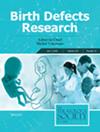Exploring Ensemble Learning Techniques for Infant Mortality Prediction: A Technical Analysis of XGBoost Stacking AdaBoost and Bagging Models
Abstract
Background
Infant mortality remains a critical public health issue, reflecting the overall health and well-being of a population. Accurate prediction of infant mortality is crucial, as it enables healthcare providers to identify at-risk populations and implement targeted interventions. By analyzing factors such as maternal education, prenatal care access, nutrition, and environmental influences, predictions help in designing effective programs aimed at reducing infant deaths.
Methods
This research paper aims to predict infant mortality in India by employing ensemble learning techniques, specifically eXtreme gradient boosting (XGBoost), stacking, adaptive boosting, and bagging. The data for the analysis are sourced from national surveys and demographic studies focusing on infant mortality in India. The collected data underwent rigorous preprocessing steps to prepare it for predictive modeling. Each ensemble learning model is applied to predict infant mortality rates based on the preprocessed data. The XGBoost handles complex and non-linear relationships within the data, and the stacking model is used for the accurate and robust predictions. The adaptive boosting model iteratively trains multiple weak learners, which makes the predictive model as stronger. The adaptive boosting technique enhances the performance of weak classifiers while effectively addressing class imbalance issues. Further, the bagging approach is implemented to derive the linear and non-linear relationships of infant mortality. Models were optimized using k-fold cross-validation to fine-tune their hyper parameters. The predictive ability of the ensemble techniques is analyzed by deploying using different performance parameters.
Results
XGBoost attained superior performance results, with a 98.75% accuracy, 98.56% precision, and 98.24% recall. The adaptive boosting model strengthened weak learners and addressed class imbalance issues, while the bagging method captures linear and non-linear relationships. Ensemble learning models demonstrated effectiveness in predicting infant mortality, with XGBoost excelling in handling complex and non-linear relationships.
Conclusions
The simulation results revealed that ensemble learning models are highly effective in predicting infant mortality rates in India, with significant regional disparities observed. For example, the Northeast region exhibited the highest predicted infant mortality rates, while the South region recorded the lowest. These findings underscore the need for targeted interventions in high-mortality areas to reduce disparities. The study highlights the efficacy of ensemble learning models, particularly XGBoost, in predicting infant mortality in India. The findings emphasize the critical role of improving maternal education, access to prenatal care, and reducing socioeconomic disparities.

 求助内容:
求助内容: 应助结果提醒方式:
应助结果提醒方式:


